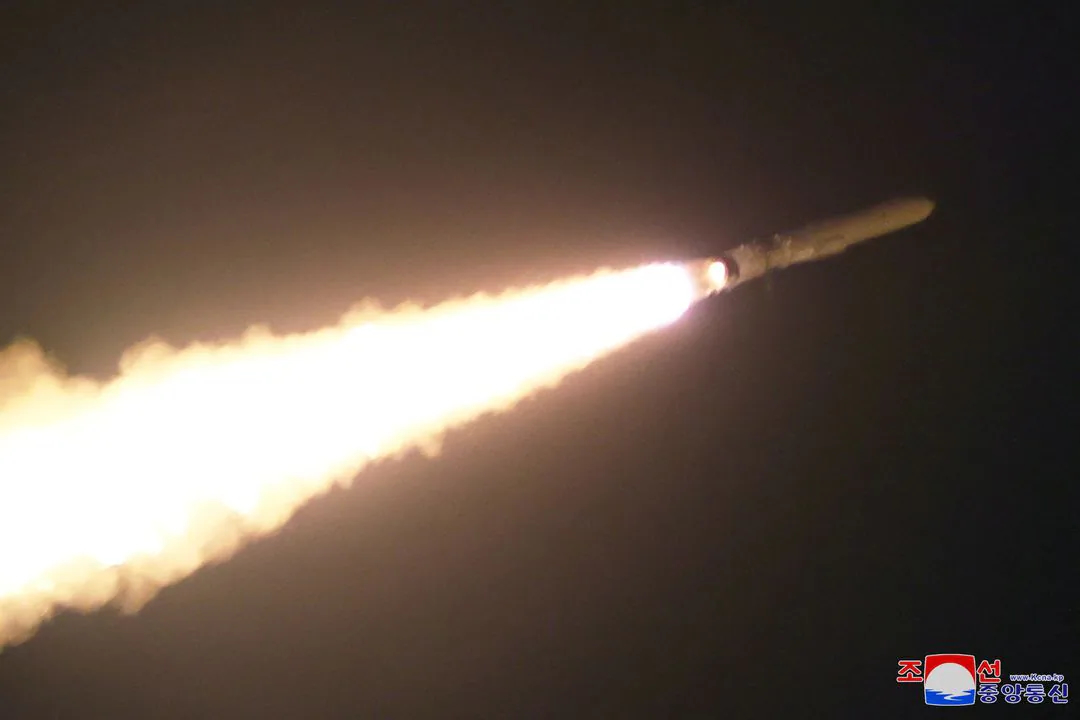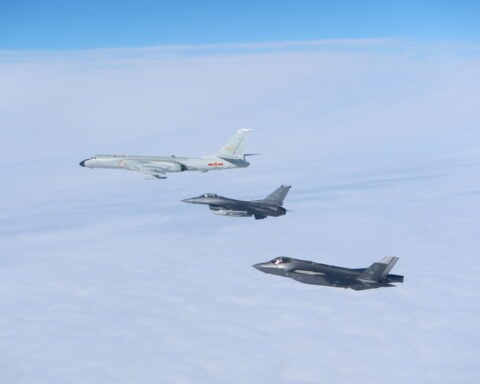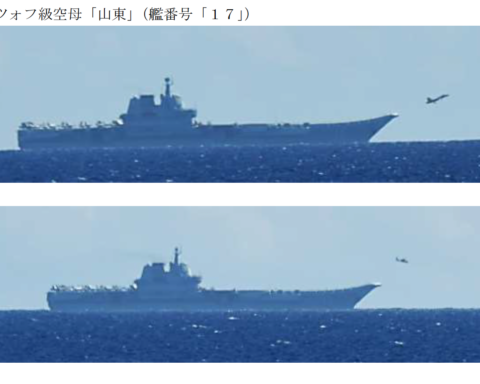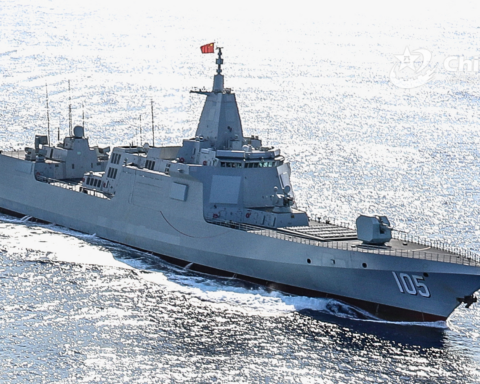
North Korea test-fired a short-range ballistic missile (SRBM) with a new autonomous navigation system on Friday, reported state media on Saturday. The last weapons test North Korea conducted was on Apr. 22, when it fired SRBMs in a nuclear command-and-control test.
The test firing verified the accuracy and reliability of the autonomous navigation system was reported by the state-run Korean Central News Agency, which also reported that the firing was overseen by North Korean leader Kim Jong Un. The test was part of the regular activities of the administration and its affiliated defense science institutes for rapid technological development of weapon systems, according to KCNA.
KCNA did not report the missile type or number of missiles fired or the range the missile traveled, but released imagery revealing that the SRBM is the Hwasong-11D tactical ballistic missile. South Korea’s Joint Chiefs of Staff (JCS) on Friday stated that at 3:10 pm that day, several SRBMs were fired from Wonsan, North Korea, and traveled 300 km before impacting into the East China Sea. “We strongly condemn the North Korean missile launch as a clear act of provocation that seriously threatens the peace and stability of the Korean Peninsula,” read the release.
U.S. Indo-Pacific Command issued a brief statement on the launch. “We are aware of the ballistic missile launches and are consulting closely with our allies and partners. While we have assessed that this event does not pose an immediate threat to U.S. personnel or territory, or to our allies, the missile launches highlight the destabilizing impact of the DPRK’s unlawful weapons program. The U.S. commitment to the defense of the Republic of Korea and Japan remains ironclad,” read the statement.
In a Tuesday press conference, Japan Defense Minister Minoru Kihara stated that his Ministry was aware of North Korea’s announcement on Saturday but does not comment on every announcement. “The government will continue to collect and analyze necessary information in close cooperation with the U.S., South Korea, and other countries, and will do its utmost to monitor the situation,” said the Japanese defense minister.
North Korea’s Friday launch followed a Thursday joint statement by Russian President Vladimir Putin and Chinese President Xi Jinping, which was issued during Putin’s visit to China. The release stated that Russia and China opposed “the actions of intimidation in the military sphere carried out by the United States and its allies, which provoke further confrontation with the DPRK, fraught with armed incidents and escalation of the situation on the Korean Peninsula.” read the statement. In the statement, Russia and China also claimed they were committed to resolving all problems of the Korean Peninsula exclusively through political and diplomatic means, and called on the international community to support constructive joint Russian-Chinese initiatives.
The Friday launch also followed a Thursday drill over central South Korea between two U.S. Air Force F-22 Raptor fighters and two Republic of Korea Air Force F-35A Lightning fighters. A Pacific Air Forces release stated that four F-22s assigned to 19th and 199th Expeditionary Fighter Squadrons, Joint Base Pearl Harbor–Hickam, and currently operating from Kadena Air Base, Japan, arrived on May 13 at Kunsan Air Base, South Korea, to provide dissimilar training and test agile combat employment capabilities within the region.
https://x.com/PACAF/status/1791591109451198854
KCNA also reported on Saturday that North Korean leader Kim visited a defense industrial complex on Friday and was satisfied with their production for the first half of 2024 and the prospect for fulfillment of the yearly munitions production plan. Imagery released by the state media showed the North Korean leader touring a facility with a number of transporter erector launchers for the Hwasong-18 intercontinental ballistic missile (ICBM) and several launchers carrying the missiles.





